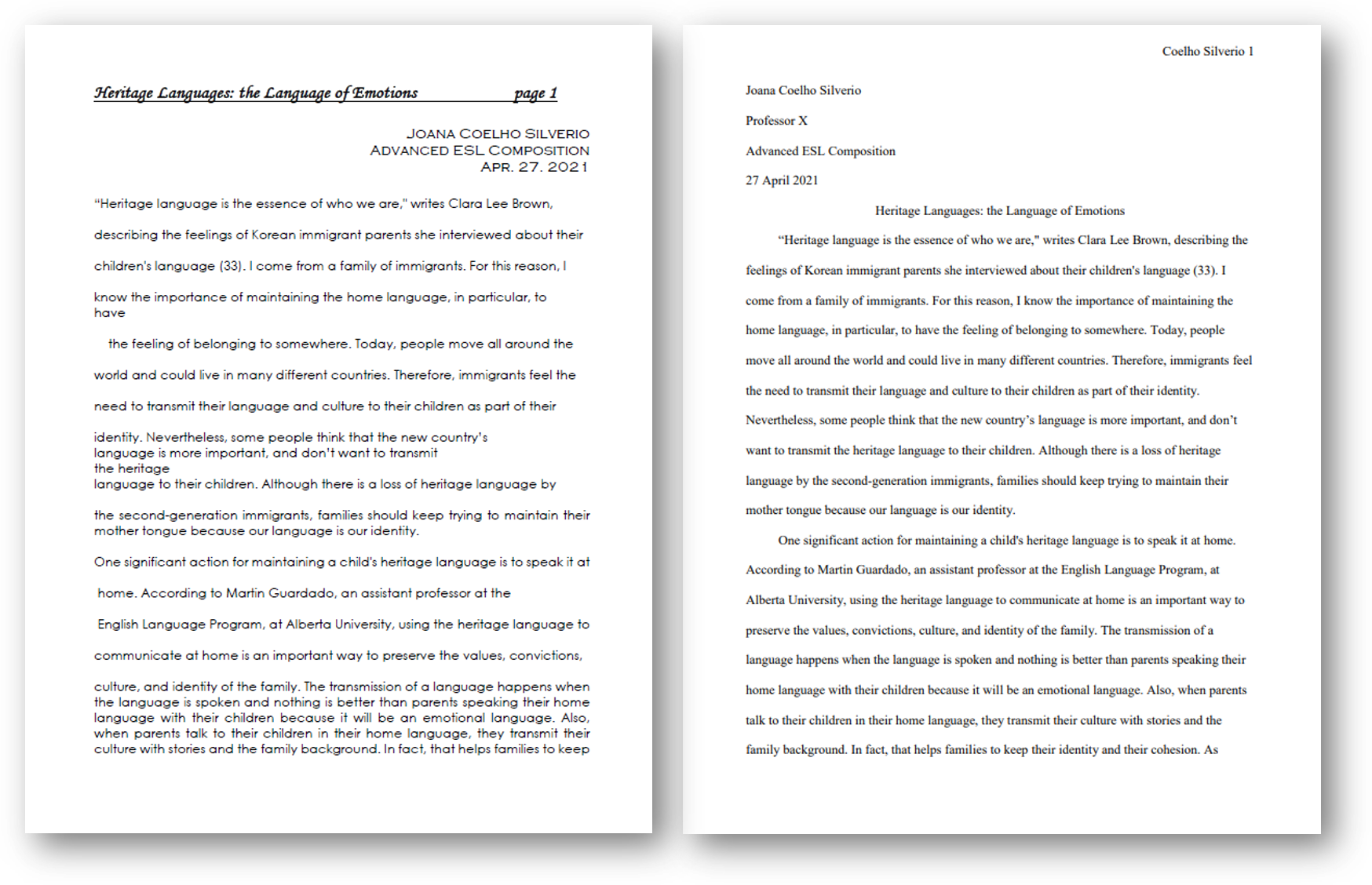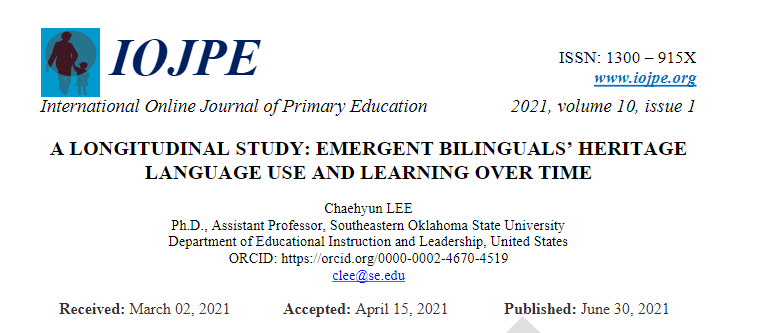4.9: Formatting Your Paper
( \newcommand{\kernel}{\mathrm{null}\,}\)
Why do we want a standard format?
When you go to a job interview, what do you wear? Most people try to dress professionally (see figure 4.9.1) to make a good first impression because sometimes people make judgments based on outside appearances instead of content. When you send your essay out to be read by other people, you probably also want it to make a good first impression on your readers. You want them to think that your essay is professional and academic, even before they read a single word.

When you write papers for a college course, the instructor will usually require you to use a specific format. Format is a standard way that a paper is required to look. It includes things like the heading, the font, and the punctuation of the list of sources and the in-text citations. There are several different official formats that look different but serve the same purposes. The format makes the paper easy to read, and makes your information about your sources easy for the reader to find.
When you glance at the two papers in figure 4.9.2, which do you think uses an official format?

The two official formats that you will probably need to use in your college courses are MLA format and APA format. The initials stand for the organization that has established the format.
“MLA” stands for Modern Language Association. MLA format is international, and is used for academic papers and journals in the areas of language, literature and the humanities. For college English classes, you will be required to use MLA format.
“APA” stands for American Psychological Association. APA format is used for academic papers and journals in the social sciences. For many college papers other than English papers, you will be required to use APA format.
MLA format
Setting up a document in MLA format
The following are the basic guidelines for setting up an MLA-formatted document. Your word program will have menu controls to help you with these settings.
- Set margins to 1” on left, right, top, and bottom.
- Set margins to ½” for header and footer.
- Use a standard 12-point font throughout the document. Times New Roman is the most common.
- Double-space throughout the document. Also remove extra space between paragraphs (Microsoft Word defaults to putting in an extra space).
- Use a straight left edge and a “ragged” right edge.
- Indent paragraphs ½” (1 tab).
- Center a document title on page 1. Use plain 12-point font—do not bold, underline, or italicize.
- Create an upper left heading on page 1 only. This should include the following:
- Your name (first and last name)
- The teacher’s name
- The name of the class
- The date
- Create an upper right header for all pages. This should include the following:
- Your last name
- An automatic page number
Sample essay in MLA format
The link below opens a version of a sample essay formatted in MLA 8th edition:
Creating an MLA Works Cited page
The purpose of the Works Cited page is to collect all of the sources used in a text and to arrange them so they are easy for your reader to locate. Listing the sources also helps you track them and makes it less likely that you might accidentally plagiarize by forgetting to mention a piece of source material.
Setting up the page
Follow these guidelines to set up your Works Cited.
- Works Cited is located at the end of a paper. Always start it at the top of a new page.
- Put the title Works Cited at the top of the page, centered.
- The Works Cited page uses the same formatting as the rest of the paper: 12 point standard font, double spacing, 1” margins on all sides, etc.
- List sources alphabetically, according to whatever comes first in each citation. (Do not list them in the order they occur within the paper.)
- Use “hanging” paragraphs to set up sources. This means that the first line of each source begins at the left margin, while second and subsequent lines are indented by ½” (1 tab). This is the reverse of a regular paragraph. The “hanging” format makes it easy to visually scroll down the list and see each source. If you are using Microsoft Word, you can set hanging paragraphs by choosing the “hanging” setting in the “Paragraphs” menu.
Figure 4.9.2 shows an annotated example of a Works Cited page (Annotated-Works-Cited-Examples to open in a new page):

Creating entries on the Works Cited page
Let’s look at how to set up Works Cited citations.
We’ll work with this article from the International Online Journal of Primary Education: "A Longitudinal Study: Emergent Bilinguals’ Heritage Language Use and Learning over Time." Figure 4.9.3 shows the top of the first page of this article.

Here is the raw information at the top of the article. You will need most of this information for your citation, but not all of it, and not in this order.
- International Online Journal of Primary Education
- 2021, volume 10, issue 1
- Copyright © International Online Journal of Primary Education
- A Longitudinal Study: Emergent Bilinguals’ Heritage Language Use and Learning over Time
- Chaehyun Lee
- Ph.D., Assistant Professor, Southeastern Oklahoma State University Department of Educational Instruction and Leadership, United States
- ORCID: https://orcid.org/0000-0002-4670-4519clee@se.edu
- Received: March 02, 2021
- Accepted: April 15, 2021
- Published: June 30, 2021
To make a citation, find each piece of information from the source. If certain parts are not there, we simply leave them blank. Note that each item is followed with specific punctuation. Copy these as you create your own citations.
Source information types and formatting rules
Table 4.9.1 shows the types of source information you need to make a citation, an explanation of what each type is, and the special rules for how to capitalize and punctuate that item.
| Type of information | Explanation | Formatting rules | Example |
|---|---|---|---|
| Author(s) | Person or organization who wrote the text |
|
Lee, Chaehyun. |
| Title | Name of the text |
|
"A Longitudinal Study: Emergent Bilinguals’ Heritage Language Use and Learning over Time." |
| Container |
The container is the “place” that holds or houses the source you’re using.
|
|
International Online Journal of Primary Education, |
| Other contributors | This line provides a way to mention people who assisted with creating or handling the source, e.g., directors, translators, performers, illustrators, etc. |
|
[This article has no other contributors. You can just skip this part.] |
| Version | Use this if you want to mention an edition number (e.g., Second Edition, Evening Edition, etc.) or if you want to list a volume (Volume 3), a month (January), etc. |
|
vol. 1, |
| Number | Use this to provide an issue number (e.g., for a magazine or journal), a special archive number (e.g., with museum pieces), or something similar. |
|
no. 10, |
| Publisher | The publisher is the person or institution that makes the source available to the world. |
|
[Like many online sources, the container and the publisher are the same; there isn't a separate publisher, so you can just skip this part.] |
| Publication date | The date the text was published. |
|
30 June 2021, |
| Location | The source’s location tells the reader where to find the source. Many sources will not have a location, but it should be listed if present. |
|
pp. 1-18, www.iojpe.org/index.php/iojpe/article/view/1/4. |
Now, to create a Works Cited citation, link all of the available elements together, following the correct punctuation and placing a space between each component.
- Use your word program's menus or the little arrows on the ruler at the top to set hanging paragraphs.
- Don’t break your lines manually: set hanging paragraphs and then keep typing, allowing the software to determine the line breaks.
- Your citation should always end with a period.
Complete citation:
Lee, Chaehyun. "A Longitudinal Study: Emergent Bilinguals’ Heritage Language Use and Learning over Time." International Online Journal of Primary Education, vol. 10, no. 1, 30 June 2021, pp. 1-18, www.iojpe.org/index.php/iojpe/article/view/1/4.
Licenses and Attributions
Introduction authored by Anne Agard, Laney College. License: CC BY NC.
CC Licensed Content: previously published
Setting up a document in MLA Format is adapted from "Resources for Working with MLA " in Carol Burnell, Jaime Wood, Monique Babin, Susan Pesznecker, and Nicole Rosevear's The Word on College Reading and Writing. License CC BY NC.
Creating an MLA Works Cited page is adapted from "Creating a Works Cited Page" in Carol Burnell, Jaime Wood, Monique Babin, Susan Pesznecker, and Nicole Rosevear's The Word on College Reading and Writing. License CC BY NC.
Lee, Chaehyun. "A Longitudinal Study: Emergent Bilinguals’ Heritage Language Use and Learning over Time." International Online Journal of Primary Education, vol. 10, no. 1, 30 June 2021, pp. 1-18. Licensed under CC BY.


